
6 minute read
Go Live
Go Live, go global
Sustainability was at the heart of this year’s Go Live! Theater where the sessions encompassed cost saving innovations, digitalization, the workforce, military aviation logistics and more
The Go Live! Theater at MRO Americas 2022 featured innovative sessions, case studies, and product briefings covering the hottest topics and industry trends, right in the center of all the action on the exhibition show floor. Open to all MRO Americas attendees, the first day set the tone and standard of expertise that would run for the entire show. The Go Live! MRO Leadership Panel had the subtitle this year of “Reducing Emissions and Prioritizing ESG Initiatives”. Leaders from across the MRO industry discussed how they are working with the airline community to reduce emissions and prioritize and promote environmental, social and governance (ESG) initiatives.
The Go Live! sessions saw many experts in their field offering opinions and advice
With industry leaders from the adjacent Sustainability Zone, the endeavors to reduce environmental footprints were communicated to an engrossed audience. From the smallest to the largest, the innovation to tackle this global challenge were many. The Nanocomposite Protective Layer (NPL) is a nano-scale barrier which is a sustainable, zero-VOC, water-based technology. Oceanit Laboratories has developed this Aeropel NPL to provide superior corrosion protection for airframe structures and components. Its application requires minimal personal protection equipment, and it dries faster than the
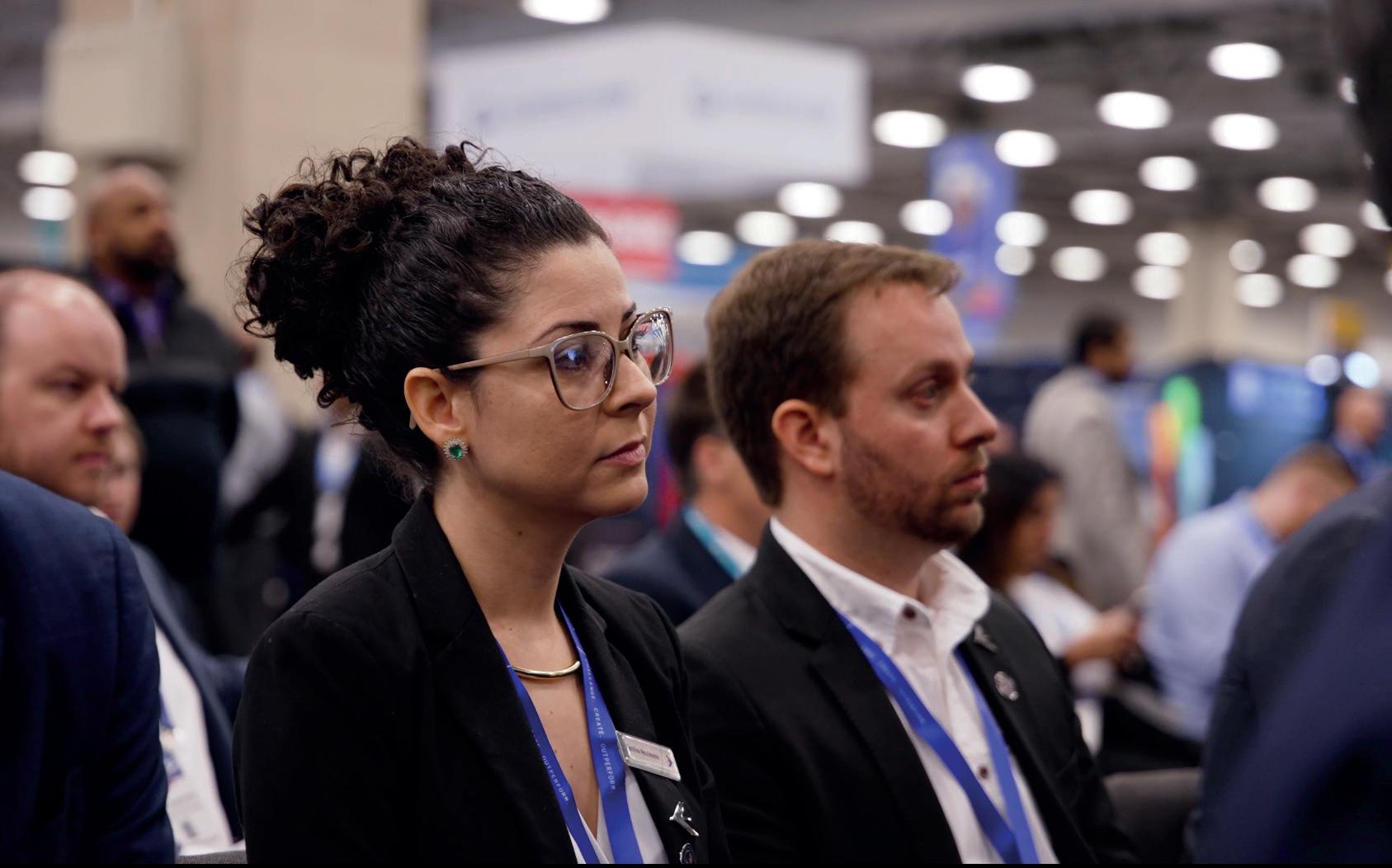
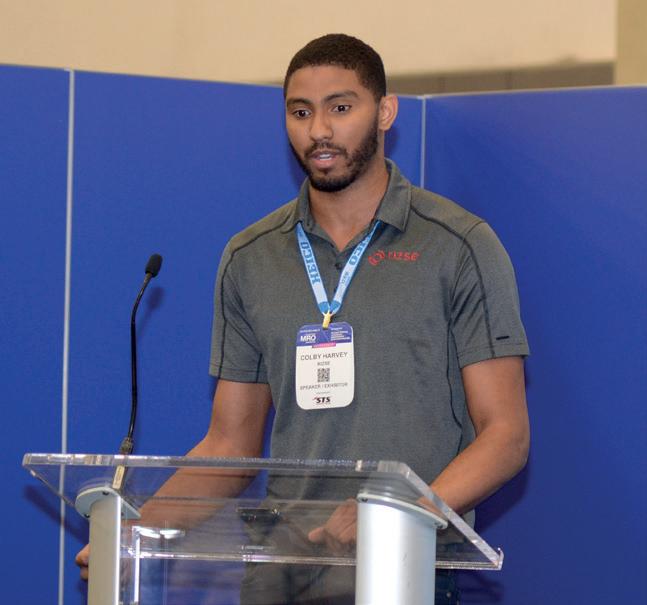


traditional anti-corrosion primer. NPL works by imparting low surface energy characteristics to protect the metallic substrate, repelling the moisture that can initiate the corrosion process.
Keeping aviation structures clean of harmful contaminants is also the job of Laser Photonics Corporation’s Clean Tech Laser Blasting. It uses laser technology systems to clean aerospace piece parts and so extend the lifespan of the aircraft. Laser Blasting eliminates the need for harsh chemicals or the consumable heavy sandblasting processes used previously for mitigating corrosion. This disruptive technology is changing the capabilities of traditional media blasting and eliminating the aspects of past processes that are subject to FDA and OSHA enforcement.
Inspecting those airframes has been a manual process for too long, but now drones are increasing inspection productivity. New company Rizse has a drone, an autonomous system, that can fly around the aircraft and provide greater insights into the airframe condition, enabling technicians to make the best decisions quickly.
Henkel Aviation highlighted the need for collaboration across the value chain to support the industry’s net-zero commitments. In October 2021, the 77th IATA AGM approved a resolution for the global air transport industry to achieve new-zero carbon emission by 2050. This aligned the industry with the Paris Agreement goal for stopping global warming from exceeding 1.5°C. A major contribution to aviation’s overall target

is the use of Sustainable Aviation Fuels (SAF). The second biggest is offsetting and carbon capture along the aerospace value chain. As a global material and technology supplier, Henkel presented its vision for the industry to achieve those netzero commitments through sustainable operations, innovative compliant materials, and greater collaboration throughout the supply chain.
During the MRO Leadership Panel, Frank Stevens, Vice President, Global MRO Centers, Embraer Services & Support, said: “It’s very important that we look at sustainability and how we support our airlines and mostly we’re working on a lot of different prospects and the biggest thing is we’re looking at 2050 for our net-zero carbon and we’re doing a lot of things to approach that such as our turboprop fleet.” Stevens explained that the turboprops could use SAF and there was a lot of focus on that while hybrid electric was a future step.
Antony Szafranek, Senior Vice President, Americas, Rolls-Royce explained during the MRO Leadership Panel that his company is: “focused around three main areas, one is improving gas turbine technology today. We think there is a huge role in the medium to long range. Second part is around our role in stimulating the acceptance of SAF. We have a mission to test all of our current product portfolio by 2023 to demonstrate that they are compatible with SAF. The third piece is around the novel technologies, electrification, battery storage is a key element and doing it safely.”
Another advocate of alternative fuels was Pall Aerospace and its filtration and purification technologies for hydrogen combustion and fuel cell applications for the hybrid propulsion and electric aircraft of tomorrow. The Pall proposed technologies range from SAF, which utilizes conventional filtration and purification technologies, to hydrogen used in direct combustion and fuel cells for electricity generation.
At the MRO Leadership Panel, Jason Reed, President, Flight Solutions Group, GA Telesis spoke of electrification. “Electrification is the way of the world these days. If you look at all the equipment on the runways and taxiways, a lot of that can go electric,” and added that, “on the supply side chain as well we have consolidated a lot of the networks of our suppliers so that ultimately is saving downstream effects of supply chains.” Pall Corporation meanwhile is leveraging its mature portfolio of technologies to develop aerospace specific solutions in support of the industry’s net-zero by 2050 goal. Green aviation initiatives are a key part of Trelleborg Aerospace’s sustainability concept that focuses on product life, buildings and infrastructure, production and compliance. For Trelleborg, the essential element is keeping these topics at the core of an
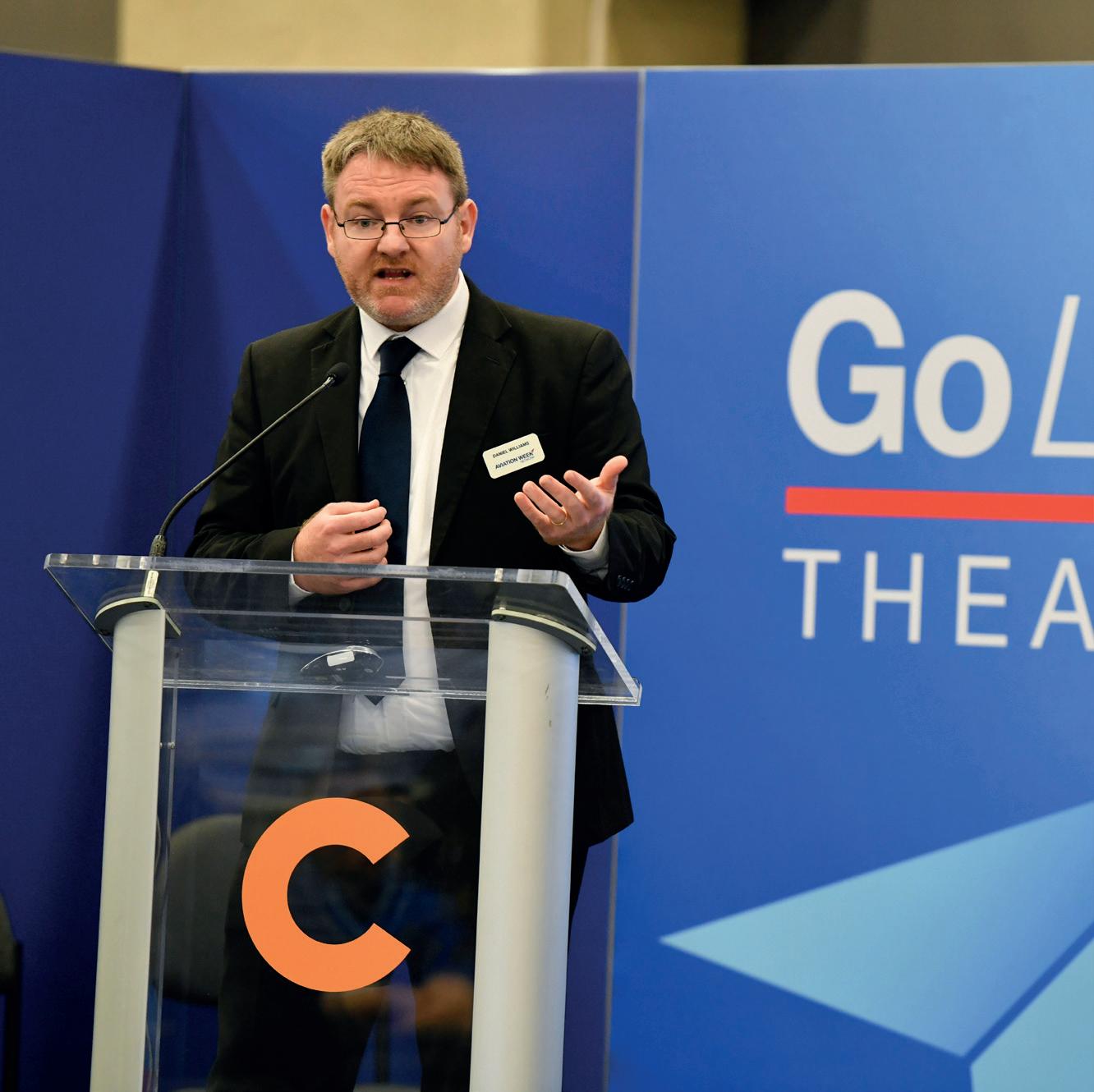
enterprise’s processes from engineering to implementation.
GOL Aerotech also has a green aviation vision and shared its practical examples on how to reduce the industry’s environmental footprint. The company demonstrated its commitment with its treatment plant that is treating 100% of the effluent waste generated by the firm’s MRO activity.
Its work led to a deeper understanding of how to treat fumes generated by aircraft painting before they are released and how technology can help reduce paper usage in an MRO environment.
At the MRO Leadership Panel, Richard Kendall, Chief Commercial Officer, HAECO set out how his company’s green aviation vision work. “Through our activities we work very closely with our OEM partners. Through our own OEM business of cabin components, we have low weight seats for a more efficient weight of the aircraft to help reduce the fuel burn.” The Go Live! Theater expert rang of speakers demonstrated the huge variety of activity that is ongoing to meet the challenges of industry and society in the face of climate change. ■

DISTRIBUTION
creating value for partners
PMA
engineering better options
MRO
reliability improvement
SERVICE & SOLUTIONS
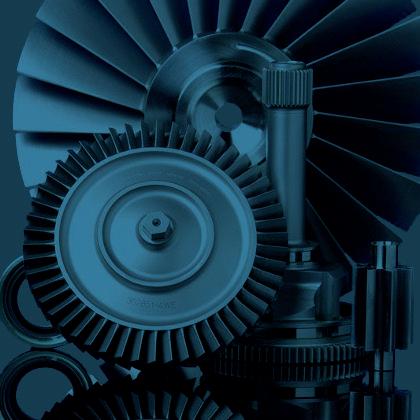
Wencor has been a trusted partner in aerospace for over 60 years, offering PMA design and development, CMM and DER repairs, and an extensive network of distribution solutions to help make flights safer and more cost effective.
With more than 150,000 active parts available to order 24 hours a day, 7 days a week, we take pride in our ability to get our customers the parts they need at the time they are needed.
HIGHLIGHTS

“It’s been a fantastic show. It’s really nice to have everyone back together and it’s been very productive for our team.” Simon Flavin (below) Sales Director, SunAero Americas
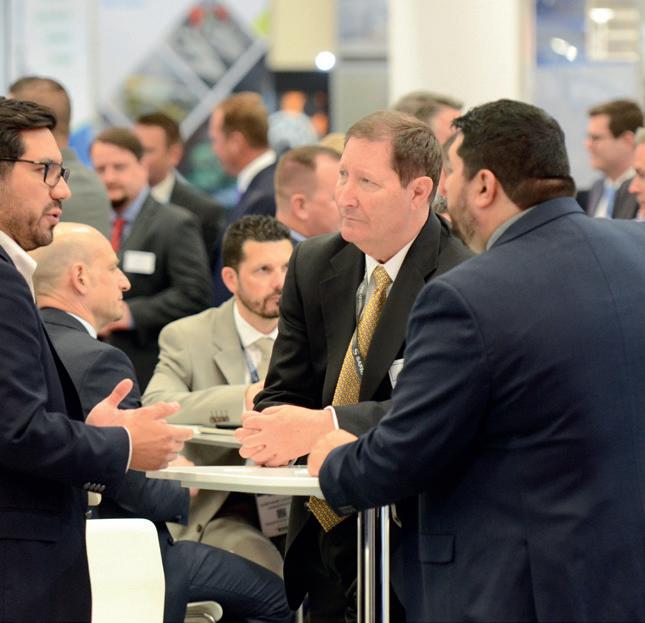

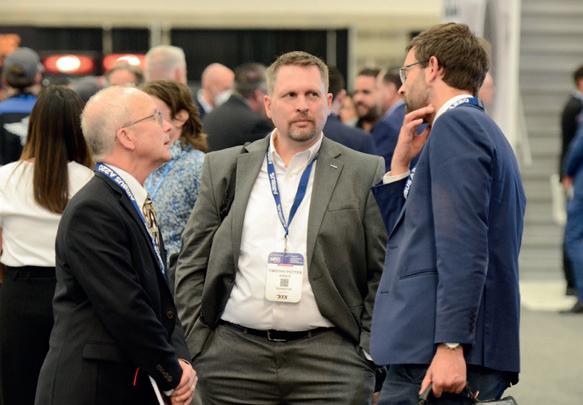
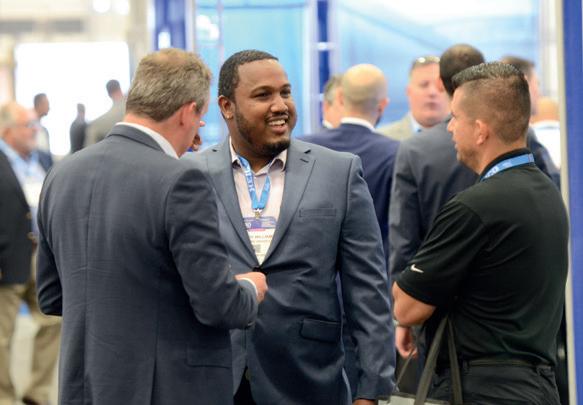

Going Above and Beyond on the Ground to Assure Your Success in the Air
See You Next Year in Atlanta!











